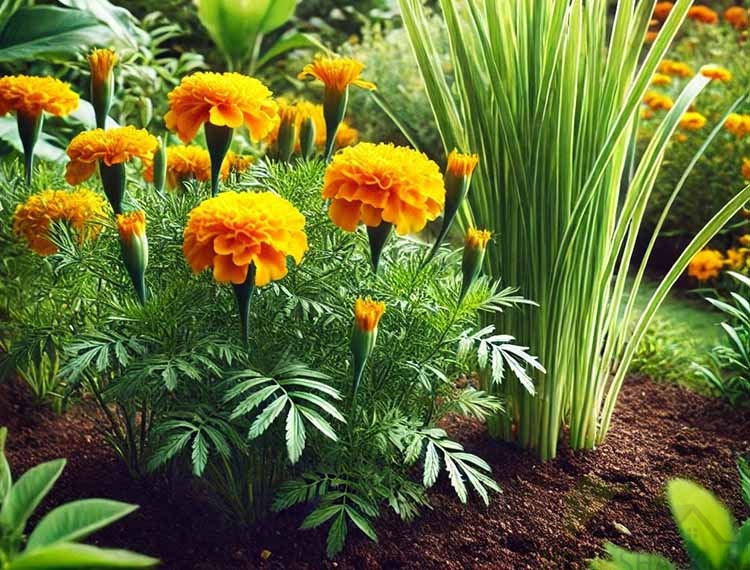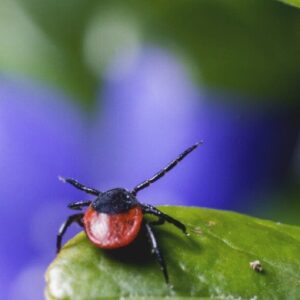Are you seeking natural methods to deter snakes effectively? Snake repellent plants provide an eco-friendly solution to keep these reptiles away from your property.
Certain plants, such as marigolds and lemongrass, are recognized for their properties that repel snakes. This discussion will encompass other effective snake control methods, along with an assessment of the effectiveness of these plants and strategic tips for their usage in your garden.
Learn how to establish a safer outdoor environment with the assistance of natural solutions.
What Are Snake Repellent Plants?
Snake repellent plants are specific species that effectively deter snakes from certain areas, playing a significant role in wildlife management by offering environmentally friendly pest control methods.
Understanding the types of plants that can repel snakes is essential for creating a safe outdoor environment while promoting biodiversity and habitat preservation.
Certain aromatic plants, including marigold, garlic, and lemongrass, contain plant compounds and volatile oils that serve as effective natural deterrents against various snake species. Consequently, these plants are well-suited for landscaping and garden design.
What Are The Most Commonly Used Snake Repellent Plants?
Numerous plants are recognized for their effectiveness in repelling snakes, making them advantageous options for homeowners focused on outdoor safety.
These plants, which include marigold, lemongrass, garlic, onion, and mint, not only improve the visual appeal of gardens but also offer an organic solution to potential snake encounters.
Integrating snake-repellent plants into one’s landscaping can establish a natural barrier, leveraging their pest-repelling properties to deter snakes and reduce instances of human-wildlife conflict.
1. Marigolds
Marigolds are vibrant, aromatic plants recognized for their efficacy in deterring snakes and other pests within garden environments. Due to their strong scent, which many snake species find unappealing, snake repellent plants are a popular choice for natural pest control in residential landscapes.
By incorporating marigolds into garden designs, one can establish a visually appealing barrier that enhances both aesthetics and safety in outdoor settings.
Along with their potent fragrance, marigolds contain essential oils believed to disrupt the sensory receptors of snakes, thus further augmenting their repellent characteristics. These resilient plants thrive in well-drained soil, prefer full sun exposure, and require moderate watering, making them relatively low-maintenance.
For optimal growth, it is recommended to plant them in late spring when the soil temperature is sufficiently warm.
Pairing marigolds with other companion plants like garlic and basil creates a stronger defense against snakes and various insect species, enhancing the overall health of your garden ecosystem. If you’re wondering what plants keep snakes away, marigolds, garlic, and basil are excellent choices to consider.
2. Lemongrass
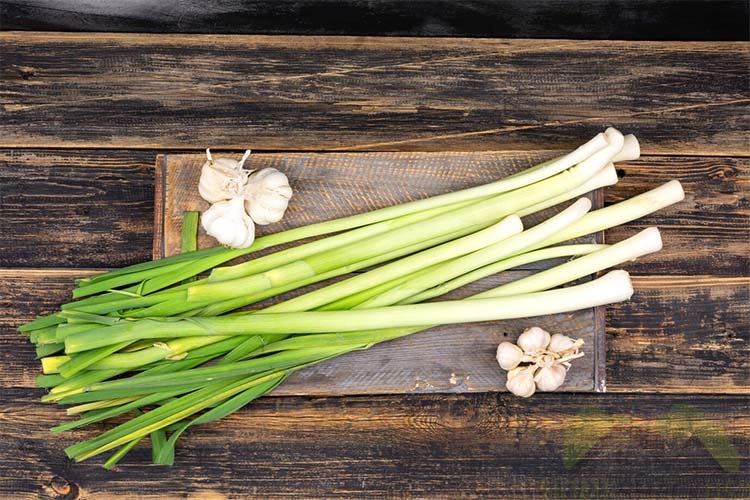
Lemongrass is a tropical perennial herb recognized for its distinct citrus aroma, which is effective in repelling snakes due to the essential oils it contains, such as citronella.
This aromatic plant serves not only as a culinary herb but also as a natural deterrent against snakes, making it a significant component of any organic gardening strategy.
Regular maintenance and appropriate placement of lemongrass can enhance its efficacy in establishing a protective barrier against snake encounters.
To cultivate this herb successfully, it is important to provide well-drained soil and ensure full sun exposure for optimal growth. Watering should be consistent yet moderate, allowing the soil to dry slightly between waterings.
Trimming overgrown stems during the growing season encourages bushier foliage and boosts the fragrance of snake repellent plants.
Integrating lemongrass around garden borders or pathways not only adds aesthetic appeal but also reinforces its function as a snake repellent.
Home gardeners can create a natural landscape by planting lemongrass in conjunction with other pest-repelling herbs, fostering a thriving garden environment that effectively deters unwanted pests.
3. Garlic
Garlic is renowned not only for its culinary applications but also for its significant efficacy as a natural remedy against various snake species. The potent odor emitted by garlic serves as a natural deterrent, rendering it an excellent choice for pest resistance in gardens.
This versatile plant can be cultivated in flower beds or utilized to create do-it-yourself repellent sprays, thereby enhancing outdoor safety and mitigating the risk of snake encounters.
Along with its direct application against snakes, garlic can be integrated into a comprehensive pest control strategy that encompasses the cultivation of other natural repellents, such as marigolds.
By planting garlic in conjunction with these flowers, gardeners can establish a protective barrier that discourages snakes and other unwanted pests.
For those who prefer a proactive approach, the preparation of homemade sprays using crushed garlic combined with water presents a feasible solution – this mixture can be applied around areas that are prone to snake sightings.
Garlic, known for its ability to keep snakes away, also offers numerous health benefits. This versatile plant enhances the immune system and provides anti-inflammatory effects, making it a valuable addition to any garden. If you’re wondering what plants keep snakes away, garlic is an excellent choice.
4. Onion
Onion plants are an effective aromatic herb known for their ability to repel snakes due to their strong scent and pungent compounds. Their presence in the garden can significantly enhance ecological balance while providing a natural solution for pest control.
By strategically planting onions, one can deter snakes from frequenting certain areas, thereby improving safety in outdoor spaces and reducing the potential for human-wildlife conflict.
These resilient plants thrive in well-drained soil under full sunlight, making them a versatile option for various garden designs. To ensure optimal growth of snake repellent plants, it’s crucial to water them properly, avoiding waterlogging which can negatively impact their development.
Incorporating onion plants into a diverse garden not only elevates its aesthetic appeal but also creates an environment that attracts beneficial insects while repelling unwanted species. For effective integration, consider planting onions:
- Along borders or pathways where snakes might enter;
- In clusters among flowering plants to establish an aromatic barrier.
This method not only helps to keep snakes at bay but also enriches the garden’s biodiversity.
5. Mint
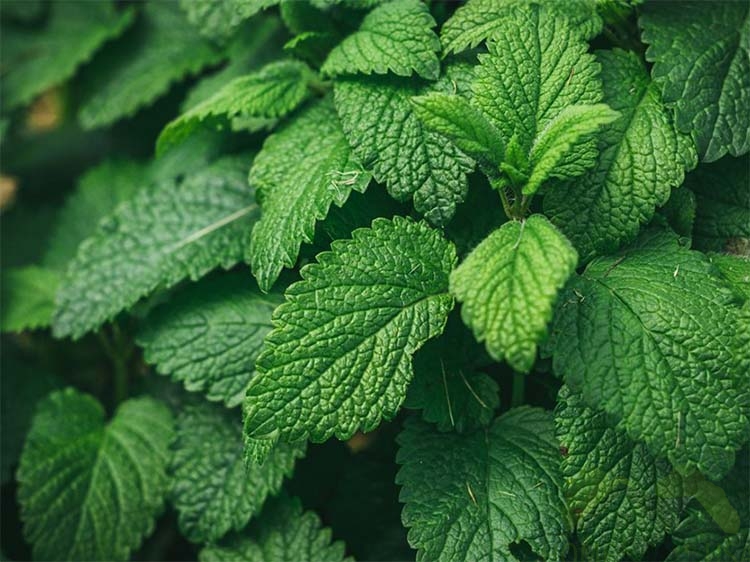
Mint is a fragrant herb that contributes not only flavor to various dishes but also serves as an effective natural snake repellent due to its potent aroma. The different species of mint, such as spearmint and peppermint, contain volatile oils that possess significant pest-repelling qualities, making them suitable for organic gardening practices.
Cultivating mint in one’s garden can disrupt the habitat preferences of snakes, thereby contributing to a safer outdoor environment.
This herb is notably easy to cultivate and can flourish in a wide range of conditions, often growing more rapidly than many other garden plants. However, its invasive nature necessitates careful consideration of planting locations; it is advisable to use pots or designated garden beds to control its spread.
By incorporating mint into an organic gardening strategy, gardeners can benefit from its delightful fragrance, natural pest deterrence, and the added advantage of flavoring their culinary creations.
What Are The Other Methods Of Repelling Snakes?
Along with the utilization of snake-repellent plants, there are several other methods available for effectively deterring snakes from residential and recreational areas.
These methods encompass chemical repellents, habitat disruption through strategic landscaping techniques, and wildlife control practices that contribute to enhanced outdoor safety.
A thorough understanding and implementation of a combination of these strategies can yield more effective solutions in reducing snake encounters and ensuring a safer environment for families.
1. Using Chemical Snake Repellents
Chemical snake repellents are commercially available products formulated to deter snakes through the use of synthetic compounds that disrupt their sensory perceptions.
While these repellents may prove effective in specific situations, they frequently raise concerns related to safety, environmental impact, and their long-term efficacy in comparison to natural methods.
A comprehensive understanding of the active ingredients and the mechanisms by which they repel snakes can enable consumers to make informed decisions regarding pest control strategies.
These products typically incorporate various active ingredients, such as naphthalene, sulfur, or metaphenylenediamine, each designed to create an inhospitable environment for snakes.
They operate by interfering with the snakes’ ability to detect food and navigate their surroundings, resulting in disorientation.
However, the effectiveness of these chemical solutions often diminishes when juxtaposed with natural alternatives, such as garlic, vinegar, or specific essential oils, which tend to be less harmful to the environment.
When considering how to keep snakes away, it’s crucial to choose environmentally sustainable methods that minimize ecological disruption. One effective approach is to learn what plants keep snakes away, as this can help balance human safety with wildlife preservation.
2. Snake Fencing
Snake fencing is an effective strategy for creating a physical barrier that can help prevent snakes from entering specific areas, such as yards and gardens. This method necessitates careful planning and strategic installation to ensure maximum effectiveness while preserving aesthetic appeal.
Incorporating proper land management practices, such as planting snake repellent plants and installing snake fencing, can greatly improve backyard safety and reduce the chances of unwanted snake encounters.
Homeowners have a range of options when selecting snake fencing, including:
- wire mesh;
- solid barriers;
- natural fencing constructed from native plants.
Wire mesh, typically made of galvanized steel, offers both durability and visibility, allowing it to serve its purpose without obstructing views. Solid barriers may present a more visually appealing option while still providing effective protection against encroaching snakes.
The installation process can vary depending on the chosen fencing type – some options are DIY-friendly and require only basic tools and hardware, while others may necessitate the expertise of professionals for optimal placement.
For those interested in wildlife observation but concerned about the presence of snakes, incorporating fencing with appropriate spacing can provide both safety and the enjoyment of observing nature without compromise.
3. Removing Potential Snake Habitats
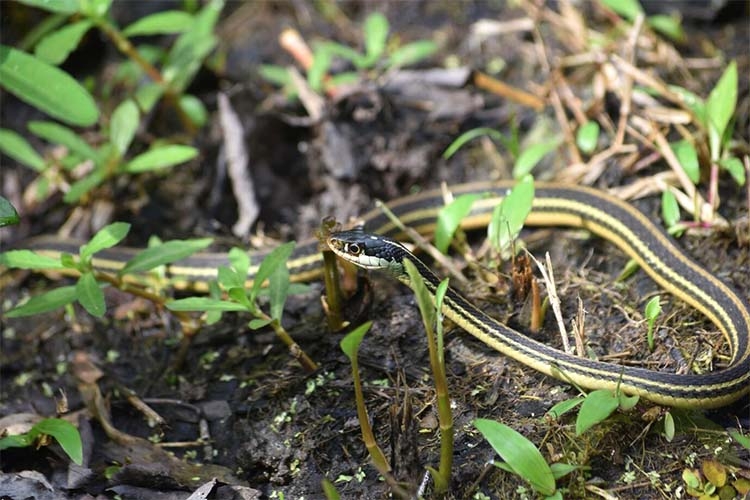
The removal of potential snake habitats around one’s property is a critical measure in preventing snake encounters and enhancing outdoor safety. This process requires the meticulous management of landscaping and garden maintenance practices to eliminate debris, tall grass, and stagnant water, all of which can attract snakes.
By understanding the environmental factors that contribute to snake habitats, homeowners can adopt effective land use strategies to mitigate the risks associated with snakes.
Recognizing that snakes are often attracted to places with plentiful food and ample shelter, such as rock piles, wood stacks, or thick vegetation, it’s essential to know what plants keep snakes away.
To maintain a snake-free environment, homeowners should:
- Regularly mow their lawns;
- Trim overgrown shrubs;
- Ensure that compost and wood piles are organized appropriately.
Additionally, diligence in removing standing water from gutters and birdbaths is necessary, as these can serve as hydration points for snakes.
Through consistent yard maintenance and a commitment to habitat disruption, homeowners can create a less inviting environment for snakes while simultaneously enhancing the overall aesthetics of their outdoor spaces.
4. Keeping Your Yard Clean
Maintaining a clean and well-organized yard is essential for minimizing the likelihood of snake encounters and ensuring a safe outdoor environment.
Regular removal of debris, trimming of overgrown vegetation, and management of potential food sources for snakes can significantly influence their habitat preferences.
By implementing effective gardening practices and proactive pest control measures, homeowners can successfully deter snakes and promote responsible wildlife management.
Additionally, homeowners should consider landscaping with snake-repellent plants, such as marigolds and garlic, which can naturally discourage these reptiles. The installation of snake-proof fencing can also serve as an effective deterrent, particularly in areas that are frequently encountered by snakes.
It is important to monitor the garden for rodents, as they represent a primary food source for snakes; taking measures to control rodent populations can help diminish attractants for these creatures.
Consistent yard upkeep, paired with these specific methods, can create a setting that discourages snakes, allowing residents to safely enjoy their outdoor areas. Incorporating snake repellent plants is a key strategy in this approach.
5. Making Noise
Creating noise has proven to be an effective method for detering snakes, as these reptiles tend to avoid areas where they sense potential threats or disturbances. By utilizing noise-making devices or engaging in loud activities, homeowners can establish an environment that is less attractive to snakes, thereby enhancing outdoor safety.
A thorough understanding of snake behavior can assist individuals in implementing effective strategies that minimize human-wildlife conflict in their vicinity.
Employing alarms, bells, or even wind chimes can effectively leverage sound to keep serpents at bay. The continuous noise produced by these devices not only disrupts the natural silence favored by snakes but also acts as an audible warning, alerting potential intruders to human presence.
Participating in frequent activities such as playing music, using power tools, or maintaining a habit of conversing loudly while outdoors can help sustain a snake-repelling atmosphere.
This deterrent strategy capitalizes on the fact that most snakes exhibit caution in response to loud noises and sudden changes in their environment, making sound a crucial element in effectively managing and reducing the likelihood of unwanted encounters.
Are Snake Repellent Plants Effective?
The effectiveness of snake repellent plants has garnered considerable attention from both gardeners and wildlife enthusiasts, with various studies underscoring their potential in mitigating snake encounters.
While scientific evidence offers valuable insights, the personal experiences of gardeners frequently demonstrate the practical advantages of incorporating these plants into a comprehensive pest control strategy.
An understanding of ecological balance and habitat preferences is essential in informing the ongoing discourse regarding the role of snake repellent plants in everyday environments.
1. Studies on Effectiveness
Numerous studies have investigated the efficacy of snake repellent plants, focusing on their potential to alter snake behavior and decrease sightings in specific areas.These scientific inquiries frequently underscore the environmental factors that contribute to the effectiveness of these plants in deterring snakes, thereby offering valuable insights into biodiversity and habitat management.
The findings support the integration of snake repellent flora into landscaping practices to enhance outdoor safety. Research has shown that plants like marigolds and lemongrass emit scents that repel certain snake species, effectively keeping them away. These natural deterrents are a great solution if you’re wondering what plants keep snakes away.
These studies highlight the significance of environmental factors such as soil composition, moisture levels, and surrounding vegetation, which can substantially affect the efficacy of these plants.
By understanding the interactions between different habitats and repellent flora, land managers can tailor their strategies more effectively. This approach not only aids in mitigating human-wildlife conflicts but also promotes overall ecosystem health, underscoring the necessity for thoughtful biodiversity management across various landscapes.
2. Personal Experiences
Personal experiences shared by homeowners and gardeners provide valuable insights into the practical effectiveness of snake-repellent plants in real-world scenarios.Numerous individuals have reported positive results, including a reduction in snake sightings and an increased sense of safety in outdoor environments after incorporating these plants into their landscapes.
These anecdotal accounts enhance the broader understanding of wildlife management and shed light on the behaviors of snakes in relation to effective deterrents.
For example, one gardener noted that after planting specific species known for their snake-repelling properties, they observed a significant decrease in unwanted snake encounters in their backyard. This observation aligns with research indicating that certain plants emit fragrances that are unattractive to snakes, thereby creating a natural barrier.
Such personal narratives not only corroborate scientific findings but also offer unique insights into the complexities of snake behavior. Homeowners frequently underscore the importance of proper maintenance of these plants, as their effectiveness can fluctuate based on environmental conditions.
This highlights the need for continued discussion on practical approaches to wildlife management within residential settings.
How To Use Snake Repellent Plants?
Effectively utilizing snake-repellent plants requires careful planting strategies, the formulation of DIY repellent sprays, and the integration of essential oils into pest control routines.
By comprehending the best practices for planting these species, homeowners can establish natural barriers that not only deter snakes but also enhance the aesthetic appeal of their gardens.
Furthermore, harnessing the aromatic compounds present in these plants can offer additional advantages regarding wildlife management and outdoor safety.
1. Planting Them Strategically
Strategically planting snake-repellent plants is essential for maximizing their effectiveness in deterring snakes from one’s property.
By understanding the habitat preferences of various snake species, gardeners can strategically place these aromatic plants to disrupt potential pathways and create natural barriers, effectively addressing the question of what plants keep snakes away.
A well-considered garden design not only enhances outdoor safety but also elevates the overall aesthetics of the landscape.
To achieve optimal results, it is crucial to space these plants effectively, allowing for adequate air circulation while also creating a dense cover. Positioning them near potential entry points, such as doors, windows, or garage openings, can further reinforce protective measures.
Incorporating companion planting techniques can enhance the functionality of the garden; for example, combining snake-repellent varieties such as marigolds or lavender with ornamental plants not only adds visual interest but also serves to deter unwanted visitors.
Selecting a diverse range of plants that bloom throughout the seasons will ensure that the landscape remains vibrant and visually appealing while simultaneously keeping slithering intruders at bay.
2. Making DIY Repellent Sprays
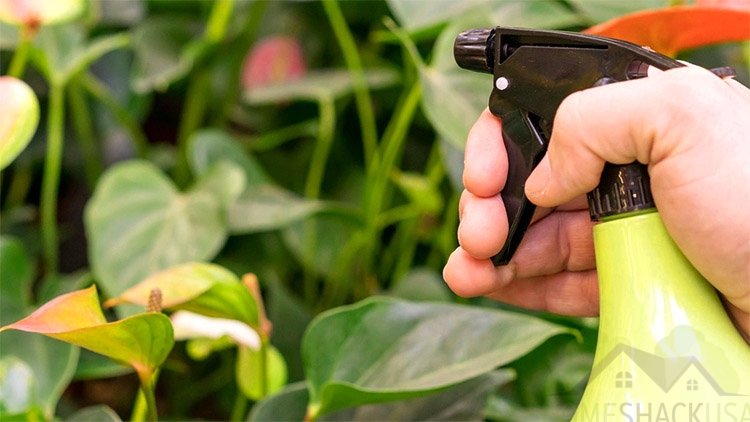
Creating DIY repellent sprays from snake-repellent plants represents an effective strategy for enhancing pest control efforts while utilizing natural ingredients. Homeowners can create effective snake repellents by extracting essential oils or infusing water with compounds from snake repellent plants like garlic, mint, or lemongrass.
This method not only supports wildlife management but also aligns with eco-friendly gardening practices. To prepare your own repellent spray, begin by collecting fresh leaves or bulbs from the aforementioned plants.
For a straightforward infusion, chop the plant material and steep it in boiling water for approximately 30 minutes, allowing the beneficial compounds to leach into the liquid. After steeping, strain the mixture and incorporate a few drops of dish soap to enhance adherence to surfaces.
Transfer the mixture into a spray bottle and apply it around perimeters, gardens, and potential entry points for snakes. It is advisable to first test a small area for any adverse reactions. Store any remaining spray in a cool, dark location, preferably in a glass container, to maintain its efficacy.
3. Using Essential Oils
By utilizing the potent aromatic compounds found in herbs such as rosemary, sage, and citronella, homeowners can develop various applications that disrupt snake habitats and enhance outdoor safety.
A comprehensive understanding of these essential oils’ properties enables innovative uses in crafting DIY repellents and implementing effective pest control strategies.
Along with these herbs, oils such as peppermint and eucalyptus are recognized for their strong scents, which can deter snakes.
To effectively implement these natural remedies, one may mix a few drops of essential oil with water and a mild soap to create a spray that offers enhanced coverage.
This solution should be applied around the perimeter of gardens, patios, and any areas prone to snake activity, with reapplication advised after rain or heavy dew. In addition to snakes in the garden you can also find ticks, so you learn more about how to keep them away.
Homeowners can create effective snake repellents by extracting essential oils or infusing water with compounds from snake repellent plants like garlic, mint, or lemongrass.
Frequently Asked Questions
What are snake repellent plants?
Snake repellent plants are a type of plant that naturally emits a scent or produces chemicals that repel snakes and keep them away from the area.
Which plants are known to keep snakes away?
Some commonly known snake repellent plants include marigolds, lemongrass, wormwood, and garlic. These plants have strong scents that snakes find unpleasant and will avoid.
Do snake repellent plants actually work?
While there is no guarantee that snake repellent plants will keep snakes away, they have been known to be effective in deterring snakes from entering an area. However, it is important to note that no plant can guarantee complete snake control.
What makes a plant a good snake repellent?
A good snake repellent plant is one that has a strong, pungent scent that is unpleasant to snakes. They may also produce chemicals that are toxic or irritating to snakes, causing them to avoid the area.
Do snake repellent plants harm snakes?
No, snake repellent plants do not harm snakes. They simply emit a scent or produce chemicals that repel them. These plants are safe for both humans and animals.
Can snake repellent plants be used indoors?
Some snake repellent plants, such as lemongrass and wormwood, can be grown indoors and will still have the same effect in repelling snakes. However, it is important to research the specific plant and its care needs before bringing it indoors.

